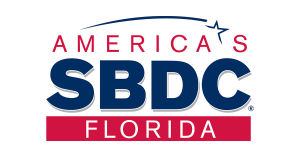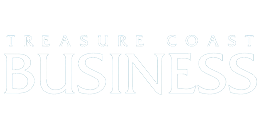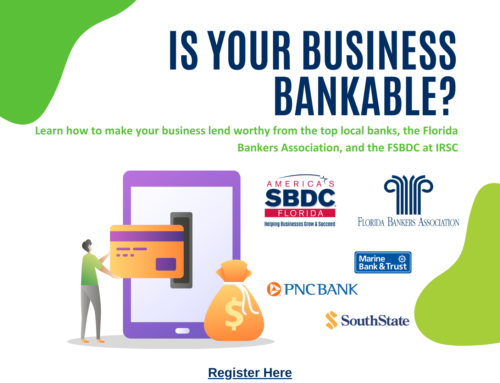BY NANCY DAHLBERG
 It’s a growing problem: Small businesses are getting in over their heads with debt, often brought on by the use of online lenders that typically charge higher rates and can require shorter payback periods than banks and other alternatives.
It’s a growing problem: Small businesses are getting in over their heads with debt, often brought on by the use of online lenders that typically charge higher rates and can require shorter payback periods than banks and other alternatives.
Because traditional bank loans are difficult for many small businesses to qualify for, more Florida business owners are turning to these non-bank online lenders, such as OnDeck, Lending Club, PayPal Working Capital and Kabbage, to name a few. And a recently released national survey of small businesses showed Florida was not alone.

Michael Bernard’s consulting experience comes from his work with several international accounting firms in their management consulting departments working with Fortune 500 companies throughout the United States. He has also worked for several local and regional accounting firms as both a manager and principal in charge of their consulting operations in the South Florida area before opening his own management consulting company in Miami.
The 3rd Quarter Small Business Credit Survey by 12 Federal Reserve Banks shows that 70% of small firms have outstanding debt. As many as 64% of small businesses are struggling financially, and say “credit availability” and “making payments on debt” are the reasons. To qualify for loans, 58% of small businesses put their personal assets on the line using personal guarantees, while 49% put down their business assets.
Nearly a third of borrowers are turning to online lenders. That’s a significant jump from the previous year when only 24% of small business owners sought funding from such institutions. The survey showed that medium- and high-risk applicants were especially inclined to seek funds from these lenders that often have higher interest rates, whereas low credit-risk applicants rely on banks.
Indeed, small businesses are drawn to online lenders because their loans are easier to qualify for and small businesses can apply, get approved, and receive the funds in a matter of days or hours rather than months. But watch out. Even beyond the higher cost of the money, many of these loans are short term and require putting personal or business assets on the line. What’s more, the shorter loan terms can play havoc with cash flow, the lifeblood of a small business.
MAKE CHANGES IN YOUR BUSINESS FIRST
Consultants at the Florida Small Business Development Center at Indian River State College (FSBDC at IRSC) have noticed an increase in businesses seeking non-traditional financing options.
Michael Bernard, an FSBDC at IRSC consultant who specializes in finance and access to capital, says that when a downturn in the marketplace occurs a business must make adjustments to operations to address and mitigate financial losses. Instead many businesses begin to borrow from high-rate lenders to offset losses, which could accelerate losses and negatively affect cash flow.
“I have seen credit card type rates because the lender sells the loan based on a short term. These types of loans are meant to be a bridge loan – bridging the company to a more conventional and traditional long term loan. But distressed organizations that are losing money can’t meet loan due dates and are forced to borrow more to pay one off. So a company can find itself in deep debt before the owner realizes they should have adjusted the business model to address profit and loss,” said Bernard, a former consultant with several international accounting firms.
“What we see is a textbook problem for many businesses — overhead is too high, the business experiences a sudden drop in sales, and a shift in marketplace in terms of pricing. Now the business finds itself borrowing short term money to address a long term problem.”
W
hat should these businesses do instead? “The environment in which the business operates changes regularly, an owner or manger must conduct an environment scan and review financial data regularly in order to be ahead of market changes. A manager must conduct regular reviews of inventory, suppliers, expenses and especially cash. How about cutting your salary?” Bernard said.
WHEN MIGHT HIGHER INTEREST RATES BE JUSTIFIED?
Obtaining high interest rate debt may be OK in some instances, such as if your company is making money and you have crunched the numbers and determined that you can leverage the borrowed funds enough to justify the high interest rate you are paying. “Only a few extraordinary conditions would have to exist for me to recommend a client take on high interest rate debt,” Bernard said.
“If the company were highly profitable and the organization could afford the higher rate or if the business is newly launched and requires the start-up capital or if the owner has exhausted every effort to secure a traditional loan and needs to the capital to take advantage of a growth market or a specific government contract,” he said.
ENSURE THAT YOUR BUSINESS IS BANKABLE!
It’s difficult to get a loan from a bank — that’s a reality. Banks typically won’t lend to businesses under two years old, or ones of any age with poor credit or businesses that cannot demonstrate two years of profitability. Out of 10 small businesses, maybe two or three are bankable, said Bernard.
SBA loans offer attractive rates but the underwriting process is no different from traditional lending processes or requirements, he said. But once the business closes a loan, “it creates a lending and credit history that the business can leverage to access capital when the businesses needs to take advantage of growth opportunities,” Bernard said. SBA lenders offer a number of loan programs for various uses.
Bernard, as well as other FSBDC at IRSC consultants, work with client companies to help them get bankable and establish a relationship with a banker.
FINANCING OPTIONS
What are some other alternatives to traditional bank loans?
SBA 504 loan: If you need a loan for real estate your business will be occupying or for equipment, the SBA 504 may be a good option. If you are able to qualify, you can borrow up to 90%, freeing up cash to grow your business.
Community foundations and nonprofits: In South Florida, CDFI organizations including Bayside Foundation and Accion lend money to qualifying organizations. However the process is not quick and there are limits to how much they will lend. Bayside may lend up to $150,000 and Accion may go to $250,000 for qualifying businesses.
Factoring: It works like this. You sell your invoices at a discount to a factoring company in exchange for a lump sum of cash. The factoring company then owns the invoices and gets paid when it collects from your customers. This could be an avenue to take, if necessary, but be careful to select the right company.
Other alternative financing avenues such as online lenders, as discussed above, as well as credit card debt, Accounts Receivables financing or PO financing may be appropriate in some situations — but read the fine print.
There is no magic potion, said Bernard. The FSBDC at IRSC works with Treasure Coast business owners and operators to assist in the process of reviewing financials and operations to get the business “bankable”.
For more information on the financing options and loans referenced in this article or to speak with a Certified Business Consultant at the FSBDC at IRSC please call — 772.462.7631 or visit www.IRSCBIZ.com.
Treasure Coast Business is a news service and magazine published in print, via e-newsletter and online at tcbusiness.com by Indian River Magazine Inc. For more information or to report news email staff@tcbusiness.com

